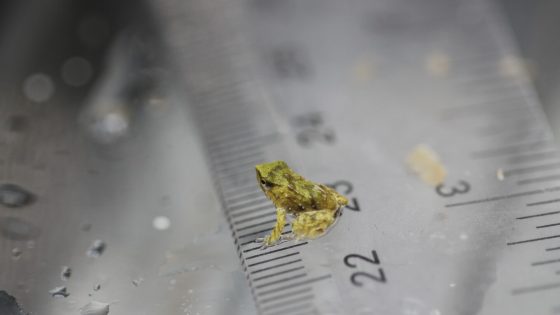On February 3, 2025, London Zoo announced the successful birth of 33 endangered Darwin’s frogs, a species facing imminent extinction. These frogs were transported from their native forests in southern Chile as part of a rescue mission to combat a severe population decline caused by chytrid fungus.
- 33 endangered Darwin’s frogs born in London
- Chytrid fungus caused 90% population decline
- Unique male parental care in Darwin’s frogs
- Conservationists traveled 7,000 miles for rescue
- Breeding program planned for future reintroduction
- Project aids understanding of amphibian diseases
The Darwin’s frog, named after Charles Darwin, has a unique reproductive method where males carry tadpoles in their vocal sacs. This species has experienced a drastic population decrease, with known numbers dropping 90% since the arrival of chytrid fungus in 2023. The fungus is a significant threat to amphibians globally, affecting hundreds of species.
In October 2023, a team of conservationists traveled to Chile to collect healthy frogs. They successfully gathered 52 Darwin’s frogs, which were transported over 7,000 miles to London. Out of these, 11 males were found to be carrying 33 tadpoles, which were born at the zoo. This breeding success is seen as a hopeful sign for the species’ future.
The frogs are being cared for in climate-controlled environments that replicate their natural habitat. London Zoo plans to establish a breeding program to increase their numbers, with the goal of eventually reintroducing them into the wild. This initiative not only aims to save the Darwin’s frog but also contributes to understanding and combating chytrid fungus, which poses a risk to amphibians worldwide.
Conservationists believe that the successful breeding of these frogs is a critical step towards ensuring their survival. The project highlights the importance of global efforts in wildlife conservation and the role of zoos in protecting endangered species.
The birth of the Darwin’s frogs at London Zoo represents a significant milestone in conservation efforts. As the species faces severe threats, initiatives like this are vital for their recovery and the broader fight against amphibian decline worldwide.
































